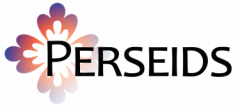Students will take to treebanking at different rates. Some understand it intuitively, others really struggle with it. We encourage you to distribute resources that the students can frequently check while doing their own work in order to get a strong understanding of the fundamentals of treebanking. The documentation for each tagset that was listed in the Preparation section should be distributed to students. You should also distribute links to our instructional videos and your own in class treebanking demonstrations. In particular, this video is a detailed guide to the Arethusa interface.
For general overview of Dependency Grammar and the Basic ALDT tagset, Vanessa Gorman has made this presentation with examples in both Greek and Latin. Feel free to download and modify to meet your needs.
Sample Treebanking Assignment
Here is an example of the assignment structure for a treebanking project. In this project, total text that the class plans on translating has been divided up into individual projects. Each student will be expected to prepare translation homework over the course of the semester, while only being responsible for the treebanks for their assigned sections. This allows each student to get a broad understanding of the text as a whole, while having an in-depth understanding of their specific section.
Each student is responsible for submitting a few trees every few weeks. Submissions were made using the Perseids Board system. After each assignment was assessed, it was returned to the students, allowing them to make corrections to their older trees and submit them as part of the next assignment block. Reviewing trees multiple times has proven very effective, especially as students become more competent with treebanking.
In class review sessions for personal treebank projects are greatly encouraged. Students should be encouraged to select trees that they find interesting, either due to it’s difficultly or complexity. This will result in each student being exposed to more trees, even if their personal project is only part of the whole text. This also encourages students to become “experts” in their own trees. These small open discussions are the ideal place for students to discuss trees, and through those discussions they gain a stronger understanding.
Supplemental Assignments
Defense essays – Students should be encouraged to defend the choices they make in their trees. Depending on their level of understanding, students should be asked to demonstrate a more comprehensive understanding of the text. At intermediate and beginner levels, students should explain why they made certain dependencies, and how those choice reflect the grammar and syntax of the sentence. At high levels, treebanks can be used to provide evidence for interpretations about the style of the author. These essays are often a way to encourage students to re-examine their treebanks, and will bolster their understanding.
